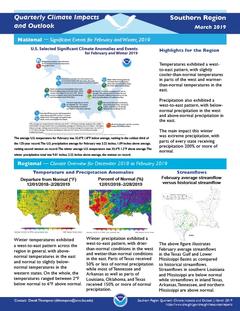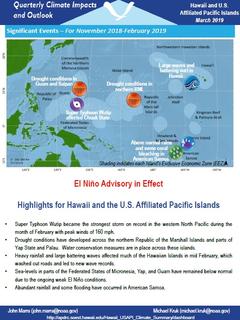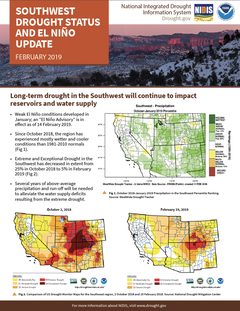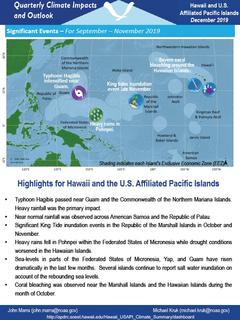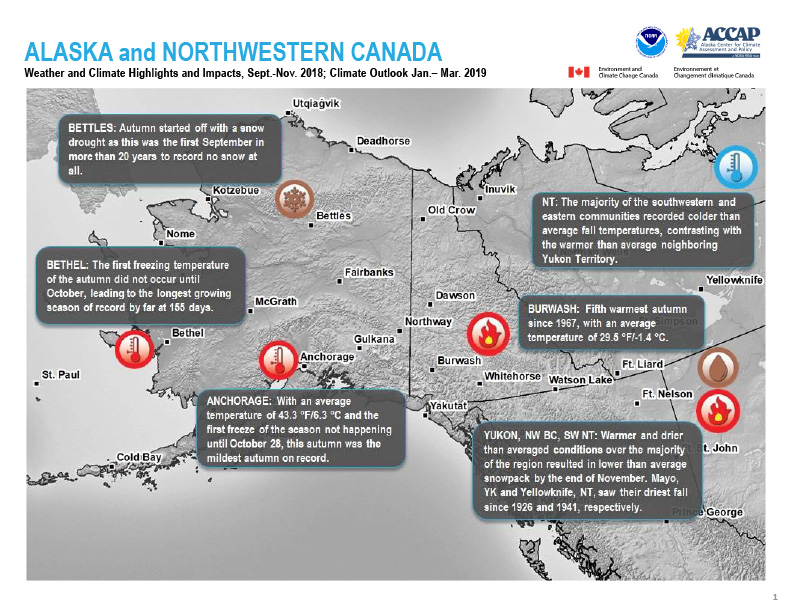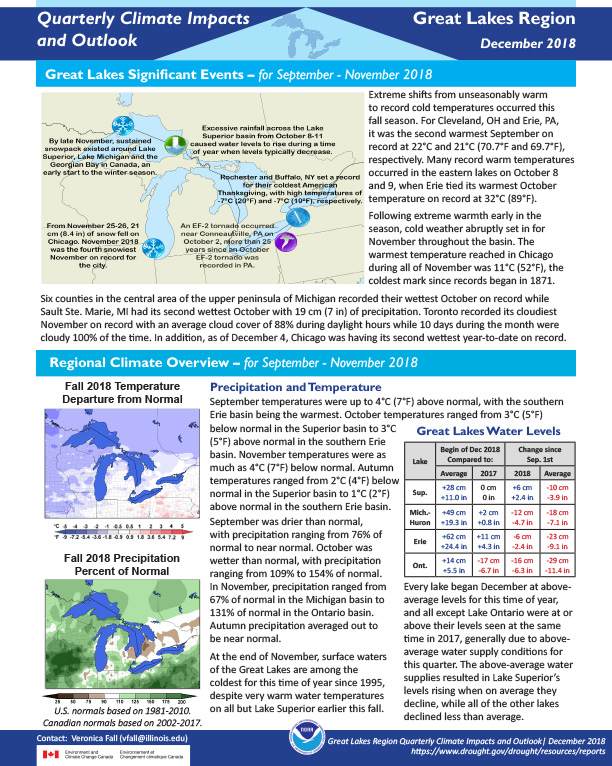Quarterly Climate Impacts and Outlook for the Southern Region for December 2018 – February 2019. Dated March 2019.
Winter temperatures exhibited a west-to-east pattern across the region in general, with above normal temperatures in the east and normal to slightly below normal temperatures in the western states. Winter precipitation also exhibited a west-to-east pattern, with drier than normal conditions in the west and wetter than normal conditions in the east.
Quarterly Climate Impacts and Outlook for the Gulf of Maine Region for December 2019 – February 2020. Dated March 2020.
Winter temperatures were as much as 4°C (7°F) above normal. Winter precipitation ranged from 50% of normal to 150% of normal. In Nova Scotia, this winter ranked among the ten driest for the Greenwood and Truro areas.
Quarterly Climate Impacts and Outlook for the Southern Region for December 2019 – February 2020. Dated March 2020.
Winter temperatures were above normal for much of the region with the west experiencing smaller departures from normal due to a cooler February. Winter precipitation varied spatially across the region with wetter than normal conditions in the north and east and drier than normal conditions in parts of the west and south.
Quarterly Climate Impacts and Outlook for Hawaii and the U.S. Pacific Islands Region for November 2018 – February 2019. Dated March 2019.
Includes significant events, regional climate overview, and sectoral impacts for November 2018 – February 2019; regional outlook for March – May 2019.
This Climate.gov feature highlights that the Ogallala Aquifer (which underlies parts of Colorado, Kansas, Nebraska, New Mexico, Oklahoma, South Dakota, Texas, and Wyoming) is drying. This will likely be one of the most pressing issues facing water availability in the Southern Plains regions in the coming decades.
Quarterly Climate Impacts and Outlook for Hawaii and the U.S. Pacific Islands Region for September – November 2019. Dated December 2019.
Includes significant events, regional climate overview, and sectoral impacts for September – November 2019; regional outlook for December 2019 – February 2020.
Quarterly Climate Impacts and Outlook for the Midwest Region for September – November 2019. Dated December 2019.
Temperatures in the region averaged below normal in the upper Midwest and above normal further southeast. The continued wetness of 2019 persisted into the fall. Year-to-date precipitation ranked among the top 10 in all nine states, with new records in Wisconsin, and the Midwest.
Quarterly Climate Impacts and Outlook for Alaska and Northwestern Canada for September – November 2018; outlook for January – March 2019. Dated December 2018.
Between September and November 2018, Alaska, the majority of the Yukon Territory, and a small portion of northwestern Northwest Territories (NT) experienced warmer than average conditions. Total precipitation between September and November was below average over a small area in northwestern Alaska, and across a band spanning southern Alaska, southern Yukon, and southern NT.
Quarterly Climate Impacts and Outlook for the Great Lakes Region for September – November 2018. Dated December 2018.
Extreme shifts from unseasonably warm to record cold temperatures occurred this fall season. Autumn precipitation averaged out to be near normal.


